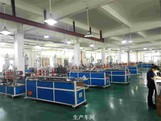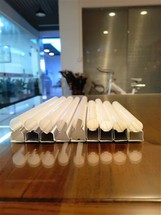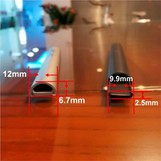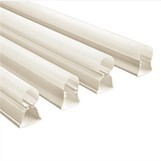As a supplier of extruded aluminium, I often encounter inquiries regarding the standards for the surface roughness of our products. Surface roughness is a critical factor that can significantly impact the functionality, aesthetics, and overall quality of extruded aluminium components. In this blog post, I will delve into the key aspects of surface roughness standards for extruded aluminium, providing insights that can help you make informed decisions when selecting our products.
Understanding Surface Roughness
Surface roughness refers to the irregularities on the surface of a material, which can be measured in terms of height, width, and spacing of these irregularities. In the context of extruded aluminium, surface roughness can affect the appearance, corrosion resistance, and mechanical properties of the product. For instance, a smoother surface may enhance the visual appeal of the aluminium, while a rougher surface can provide better adhesion for coatings or paints.
International Standards for Surface Roughness
There are several international standards that govern the surface roughness of extruded aluminium. One of the most widely recognized standards is the ISO 4287:1997, which defines the parameters and methods for measuring surface roughness. This standard provides a common framework for manufacturers and customers to communicate and specify the desired surface finish of extruded aluminium products.
Another important standard is the ASME B46.1-2009, which is used primarily in the United States. This standard also provides guidelines for measuring and specifying surface roughness, and it is often referenced in engineering drawings and specifications.
Factors Affecting Surface Roughness in Extruded Aluminium
Several factors can influence the surface roughness of extruded aluminium. These include:
Extrusion Process
The extrusion process itself can have a significant impact on the surface roughness of the aluminium. Factors such as the die design, extrusion speed, and temperature can all affect the quality of the surface finish. For example, a poorly designed die may result in a rough or uneven surface, while a high extrusion speed may cause surface defects such as streaks or scratches.
Aluminium Alloy
The type of aluminium alloy used in the extrusion process can also affect the surface roughness. Different alloys have different mechanical properties and chemical compositions, which can influence how the material behaves during extrusion and how it responds to surface finishing treatments. For instance, some alloys may be more prone to surface oxidation or corrosion, which can lead to a rougher surface.
Surface Finishing Treatments
Surface finishing treatments such as anodizing, painting, or polishing can be used to improve the surface roughness of extruded aluminium. These treatments can help to smooth out the surface, enhance the corrosion resistance, and improve the overall appearance of the product. However, the effectiveness of these treatments depends on the type of alloy, the initial surface roughness, and the specific treatment process used.
Measuring Surface Roughness
There are several methods available for measuring the surface roughness of extruded aluminium. The most common method is the use of a profilometer, which is a device that measures the height variations of the surface. Profilometers can provide detailed information about the surface roughness, including the average roughness (Ra), the maximum roughness (Rz), and the root mean square roughness (Rq).
Another method is the use of optical microscopy or scanning electron microscopy (SEM), which can provide high-resolution images of the surface and allow for the visualization of surface defects and irregularities. These methods are often used in research and development settings to study the surface properties of extruded aluminium.
Acceptable Surface Roughness Values for Different Applications
The acceptable surface roughness values for extruded aluminium depend on the specific application of the product. For example, in applications where the appearance is critical, such as architectural or decorative applications, a smoother surface finish may be required. In contrast, in applications where the surface is not visible or where the primary function is mechanical, a rougher surface finish may be acceptable.
Here are some general guidelines for acceptable surface roughness values in different applications:
Architectural and Decorative Applications
For architectural and decorative applications, such as LED Aluminum Extrusion or Extruded Aluminium Linear Light, a surface roughness of Ra ≤ 0.8 μm is often considered acceptable. This level of surface finish provides a smooth and aesthetically pleasing appearance, which is important for these types of applications.
Industrial Applications
In industrial applications, such as machinery components or structural parts, a surface roughness of Ra ≤ 1.6 μm may be acceptable. This level of surface finish provides a good balance between functionality and cost, as it is relatively easy to achieve and does not require extensive surface finishing treatments.
Automotive Applications
For automotive applications, such as engine components or body parts, a surface roughness of Ra ≤ 0.4 μm is often required. This high level of surface finish is necessary to ensure proper functioning and durability of the components, as well as to meet the strict quality standards of the automotive industry.
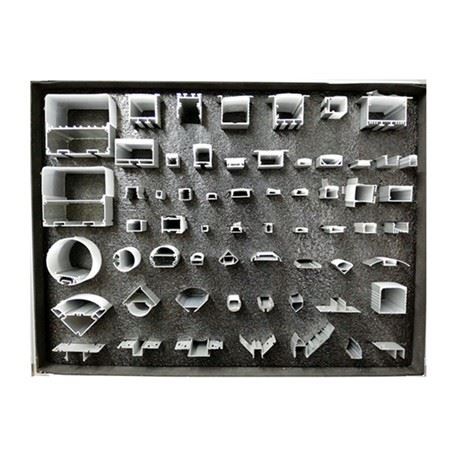

Importance of Surface Roughness in Extruded Aluminium Products
The surface roughness of extruded aluminium products is important for several reasons:
Aesthetics
A smooth and uniform surface finish can enhance the visual appeal of extruded aluminium products, making them more attractive to customers. This is particularly important in applications where the appearance of the product is a key factor, such as architectural or decorative applications.
Corrosion Resistance
A smoother surface finish can provide better corrosion resistance, as it reduces the surface area available for corrosion to occur. This is especially important in applications where the aluminium is exposed to harsh environments or chemicals.
Mechanical Properties
The surface roughness can also affect the mechanical properties of extruded aluminium products. A rougher surface may provide better adhesion for coatings or paints, which can improve the durability and performance of the product. Additionally, a smooth surface can reduce friction and wear, which can improve the efficiency and lifespan of the components.
Conclusion
In conclusion, the surface roughness of extruded aluminium is a critical factor that can significantly impact the functionality, aesthetics, and overall quality of the products. As a supplier of extruded aluminium, we understand the importance of meeting the specific surface finish requirements of our customers. By adhering to international standards and using advanced extrusion and surface finishing techniques, we can provide high-quality extruded aluminium products with the desired surface roughness.
If you are interested in learning more about our LED Aluminum Profile or other extruded aluminium products, or if you have specific requirements regarding surface roughness, please feel free to contact us. We are always happy to discuss your needs and provide you with the best solutions for your projects.
References
- ISO 4287:1997, Geometrical Product Specifications (GPS) - Surface texture: Profile method - Terms, definitions and surface texture parameters.
- ASME B46.1-2009, Surface Texture (Surface Roughness, Waviness, and Lay).

